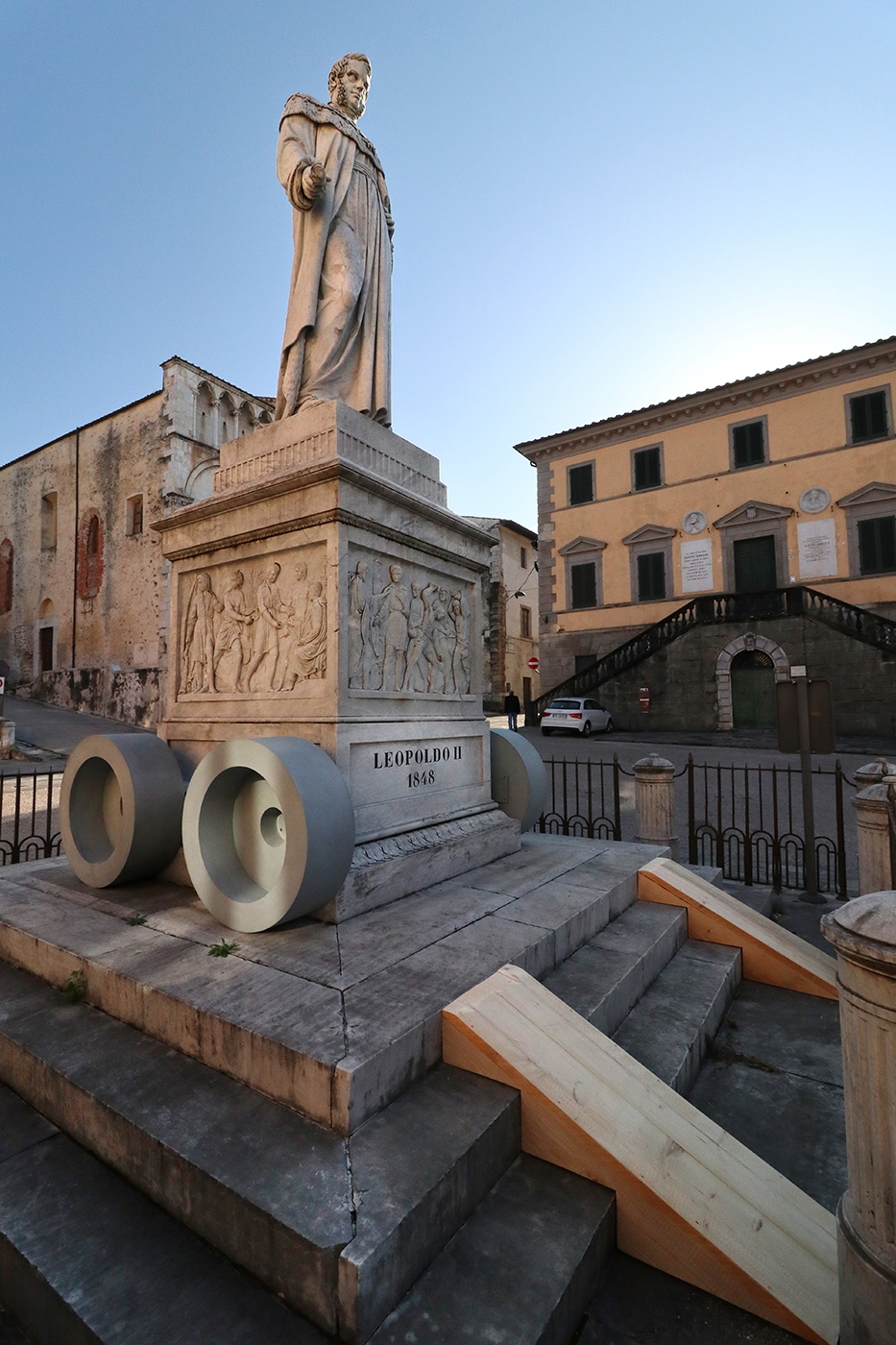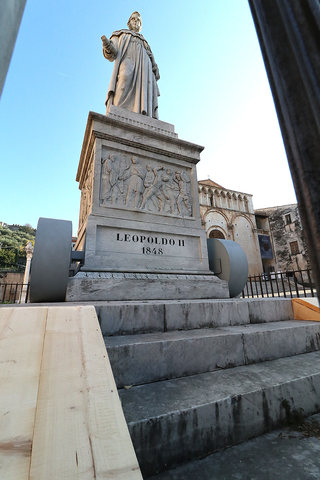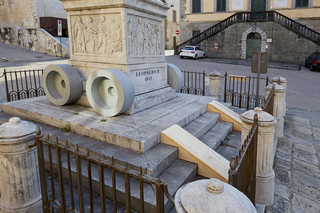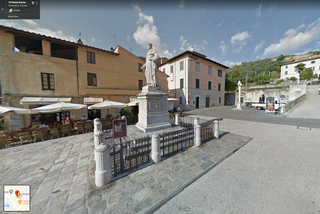Art, history and urban space
During the 2019 'Erratico' exhibition in Pietrasanta, set up in both the Cloister and the Church of San'Agostino, Umberto Cavenago created bold and provocative interventions in the square in front of the two pre-existing monuments: the monument dedicated to Leopold II and the Marzocco Column. For the monument to Leopold II, Cavenago created four large steel wheels, mounting them at the base of the plinth adorned with inscriptions and bas-reliefs. For the Marzocco Column, the wheels were smaller, but still mounted at the base of the structure. On the steps that raise each monument above the level of the square, he installed two wooden ramps, suggesting an imminent displacement of the sculptures, in themselves celebratory and immutable. These destabilising gestures transform static monuments into dynamic works, inviting us to rethink our relationship with historical memory.
The interventions provoked strong reactions from the public in Pietrasanta, who are accustomed to a traditional conception of sculpture as a still, immobile work on a pedestal. The local press called Cavenago's works a disgrace to the art of the past and the tradition of the place. This criticism reflects a deep-rooted resistance to change and a defence of established artistic conventions.
Cavenago, aware of the reactions his interventions would provoke, designed the works with a clear intention: to destabilise certainties and beliefs about the role of public art. Despite the technical precautions taken to avoid damage to historical monuments, the dominant perception was that of an act of irreverence. The artist's aim was to stimulate a critical reflection on the meaning and function of art in public contexts, challenging the public to reconsider the interaction between art, history and urban space.
Pietrasanta, home of the marble monument and traditional sculpture, also sees contemporary artists grappling with the same stylistic features. In this context, Cavenago's interventions take on an even more provocative significance. Not only do they break with local tradition, they invite a new vision of public art, proposing a critical dialogue on the value and evolution of art in contemporary society. Cavenago's desecrating and uncomfortable works resist traditional categorisation, challenging expectations and opening up new interpretative possibilities.





Social
Contatti
umberto@cavenago.info